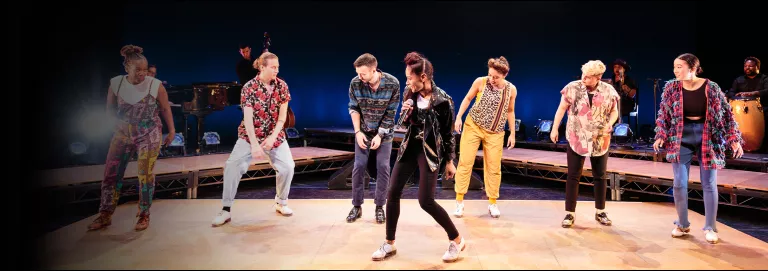
Northrop Presents
Ayodele Casel
Rooted
Past event
Sep 27, 2023
Sep 28, 2023
Sep 29, 2023
Tap artists and jazz musicians share the stage with a seated audience for an interactive performance that elevates the rich history of tap dancing. Born in The Bronx and raised in Puerto Rico, Ayodele Casel is hailed as a “tap dancer and choreographer of extraordinary depth” (The New York Times). A Doris Duke Artist known for her skilled and imaginative improvisation, Casel’s projects include her concert and Bessie Award-winning film Chasing Magic, and her Drama-Desk-nominated work as tap choreographer for the Broadway revival of Funny Girl.
Learn Tap Choreography for Broadway's Funny Girl from Ayodele Casel
The content below derives from the Northrop Across Campus Program that supports Northrop's mission towards intersections between performing arts and education for the benefit of all participants now and for generations to come.
Find ways to make thematic connections to these suggested topics:
Take a deeper dive with these resources that provide additional information about the performers, the history of the artform, and the artistic process.
Links:
Start a conversation about the performance, or encourage reflection, using these questions as inspiration.
Award winning tap dancer and choreographer Ayodele Casel will be performing her work Rooted at Northrop. The performance invites community participation and is uniquely configured to have the artists—5 dancers and 3 musicians—and the audience onstage. The show highlights tap history and celebration of identity, accompanied by a live score of jazz music.
In an interview with Creative Times, Ayodele Casel was asked to speak about her mantra, "I am my ancestors' wildest dreams.” She responded, “I just try to live my life with the awareness that I am able to do my work as freely (literally and figuratively) as I can and with such vigor because of the work and sacrifice of those who came before me.”
Casel’s solo work, While I Have the Floor, incorporated spoken word and tap and explored her evolution as a tap artist and her upbringing in the Bronx and Puerto Rico. Growing up, she had to learn and relearn both Spanish and English, which made it difficult to express herself. Her performance paid homage to the forgotten Black female tap artists that came before her, and she began to build narrative into her improvisations, including stories about her love of music and family history.
Most professional dancers start taking dance classes very young. Ayodele Casel didn't take her first dance class until college.